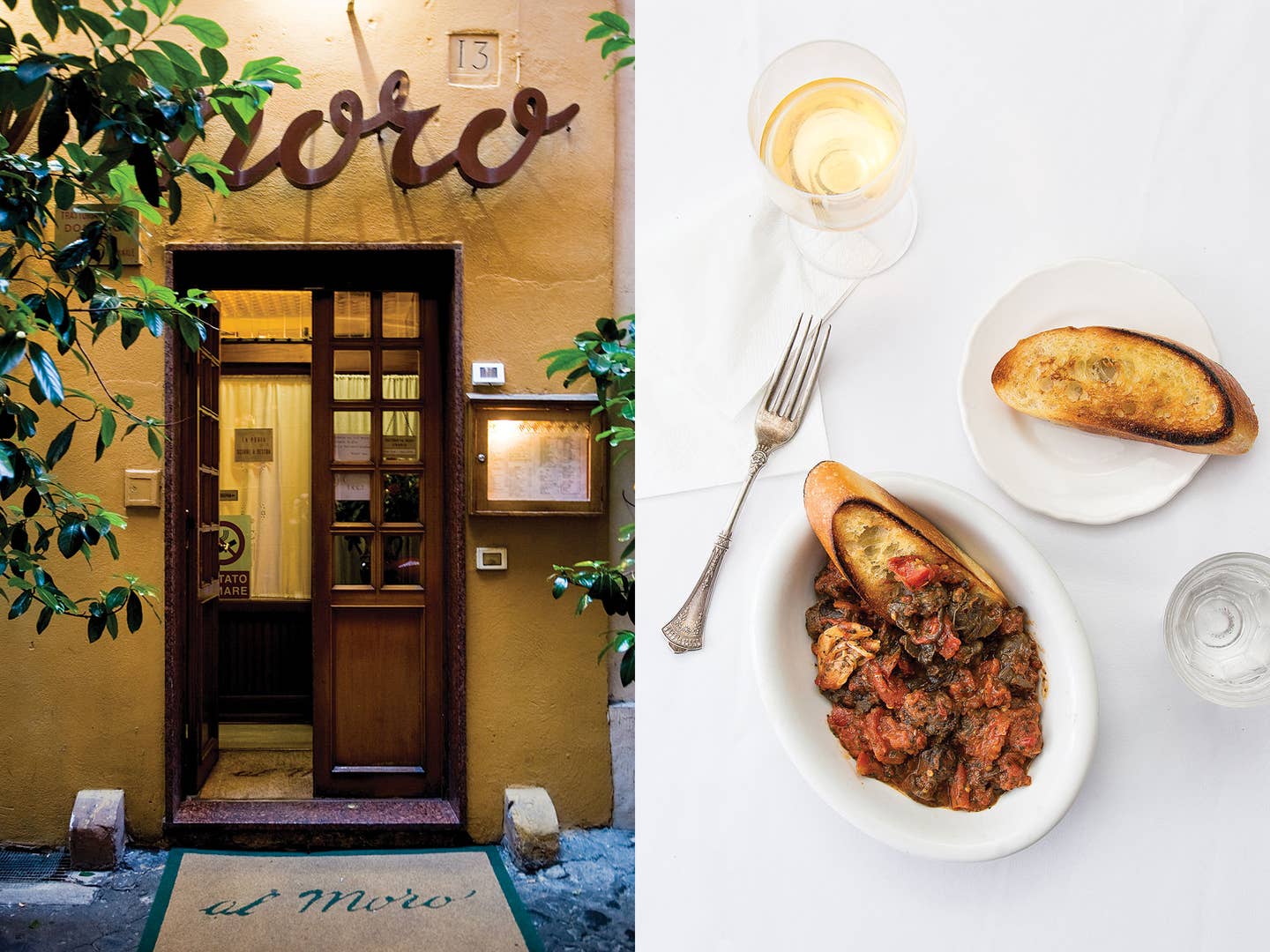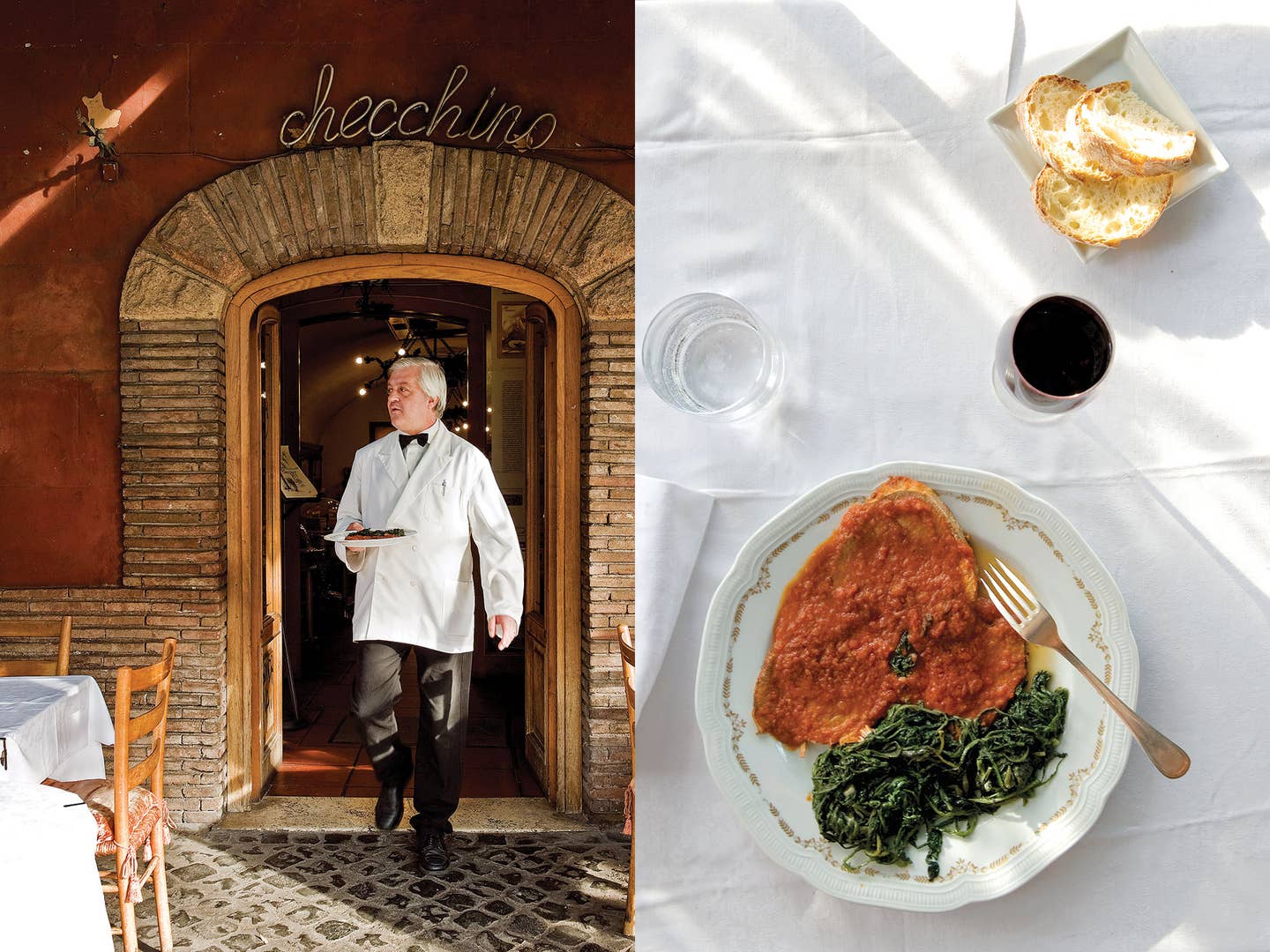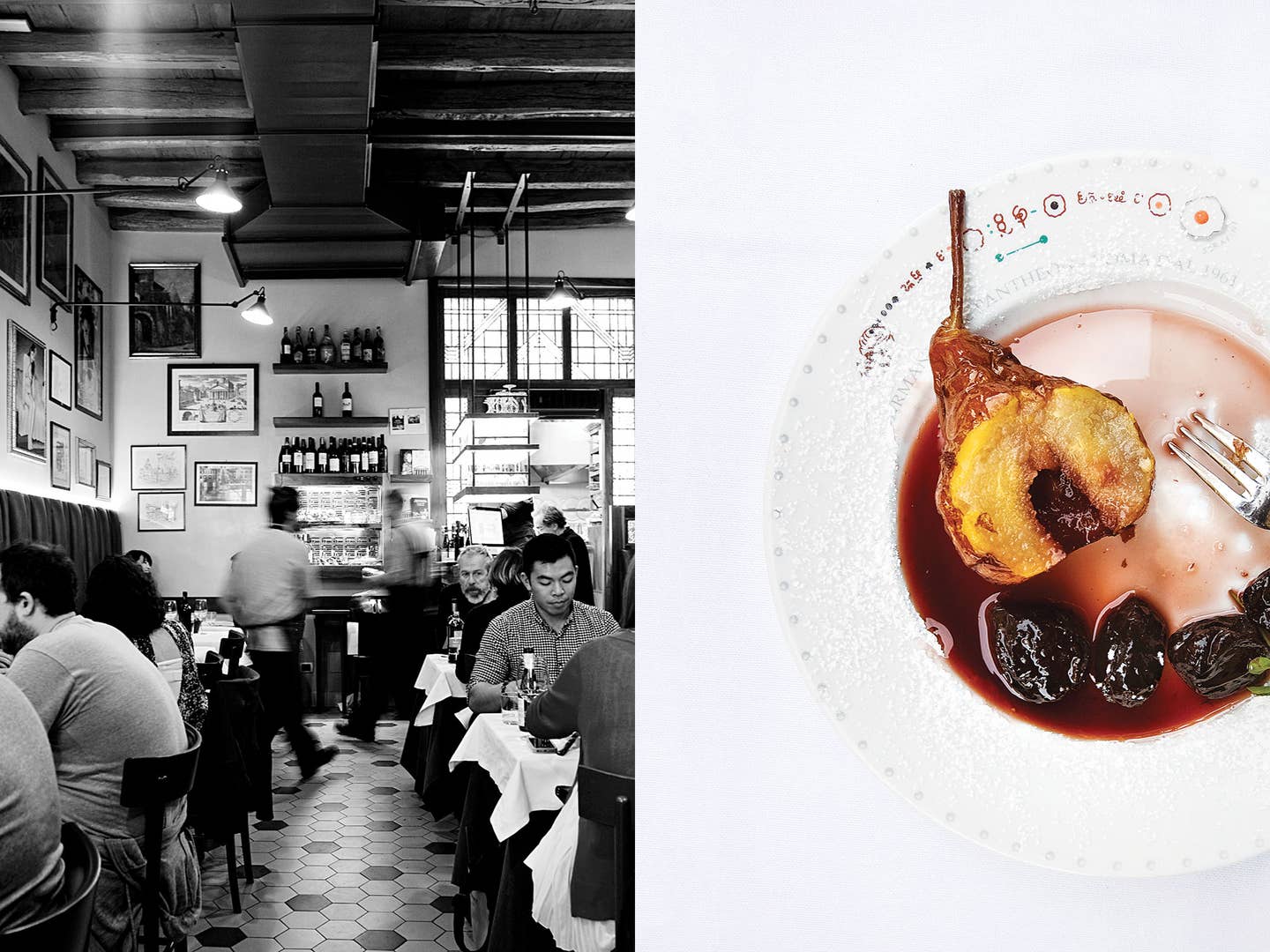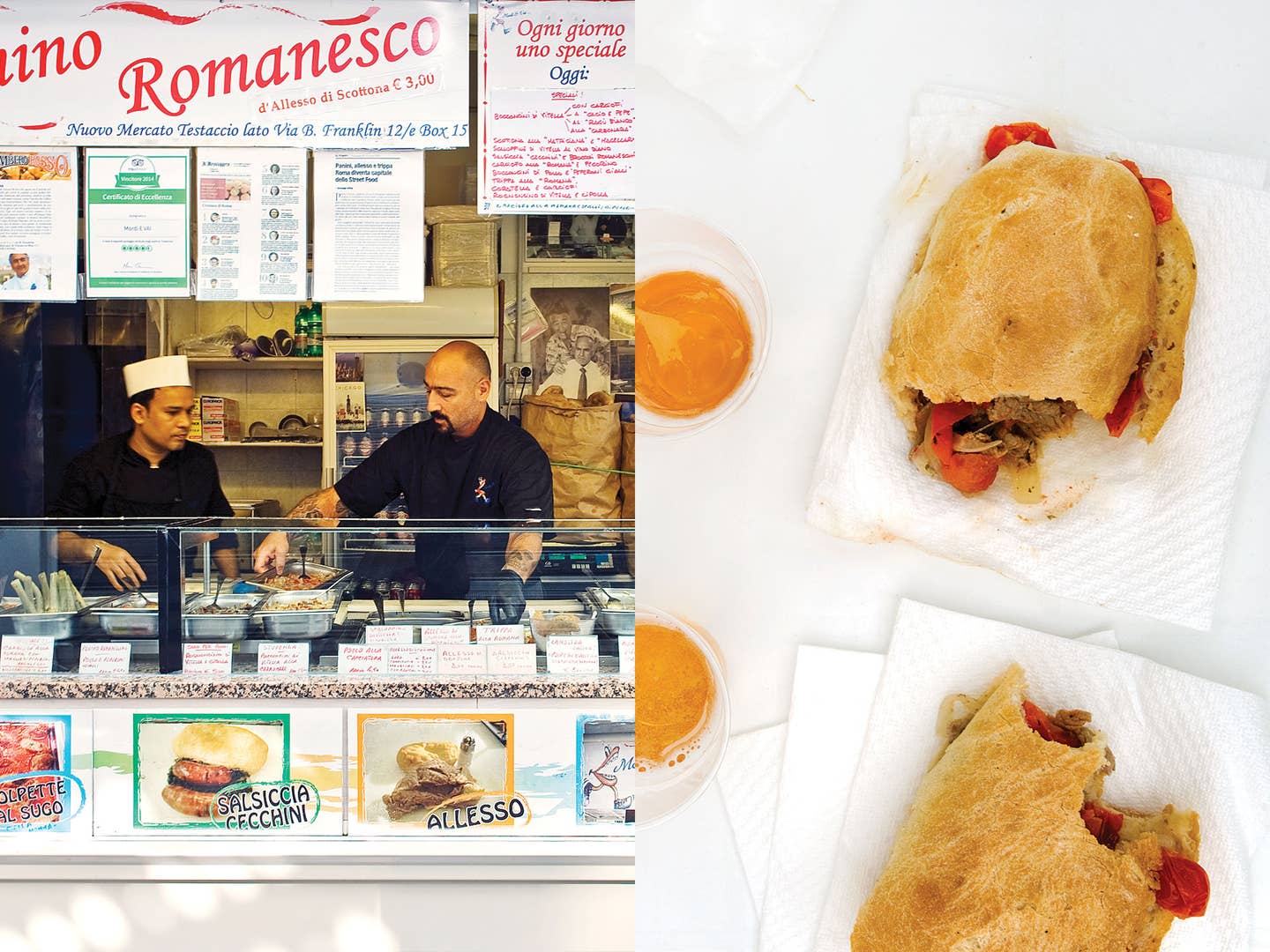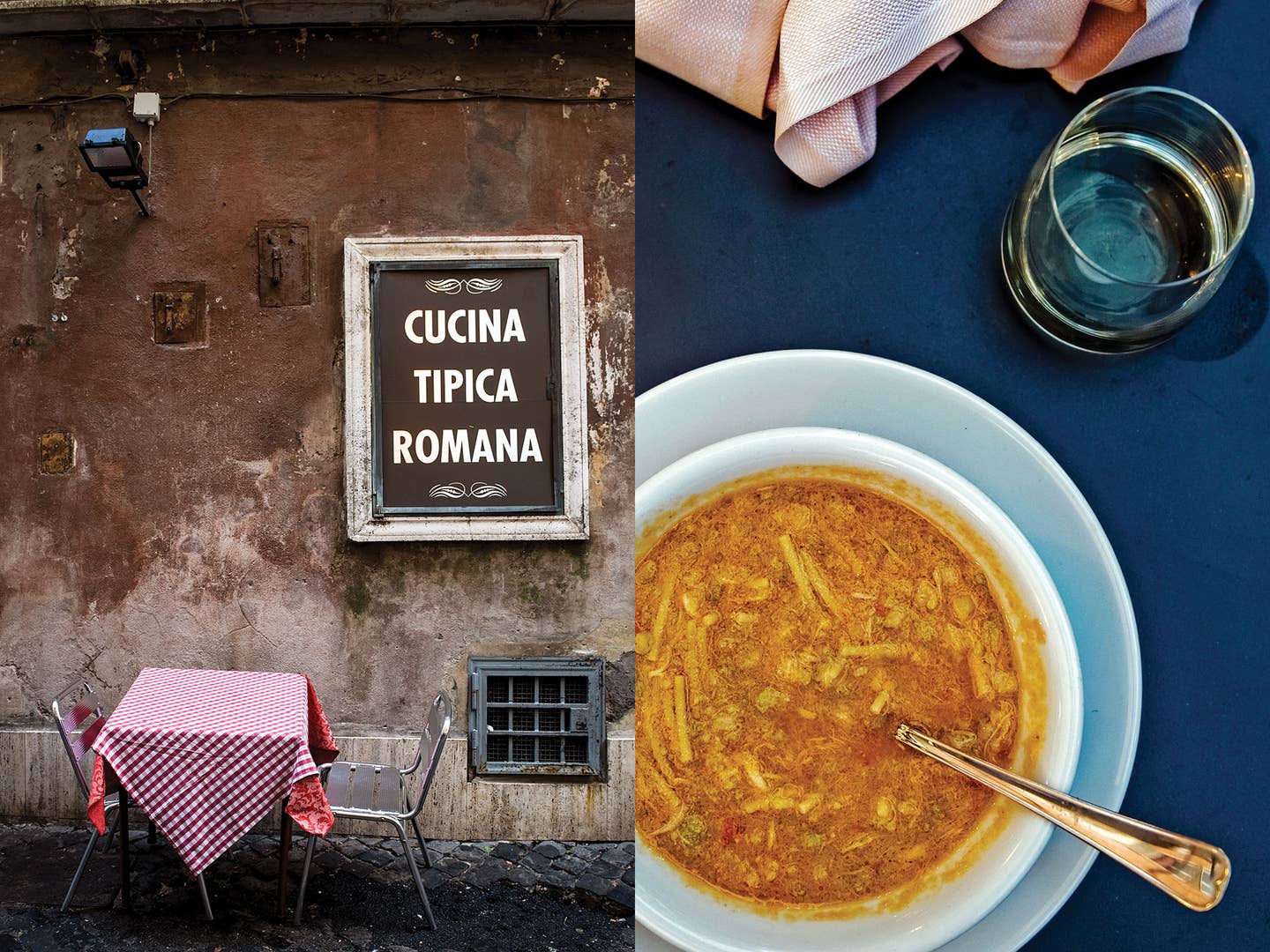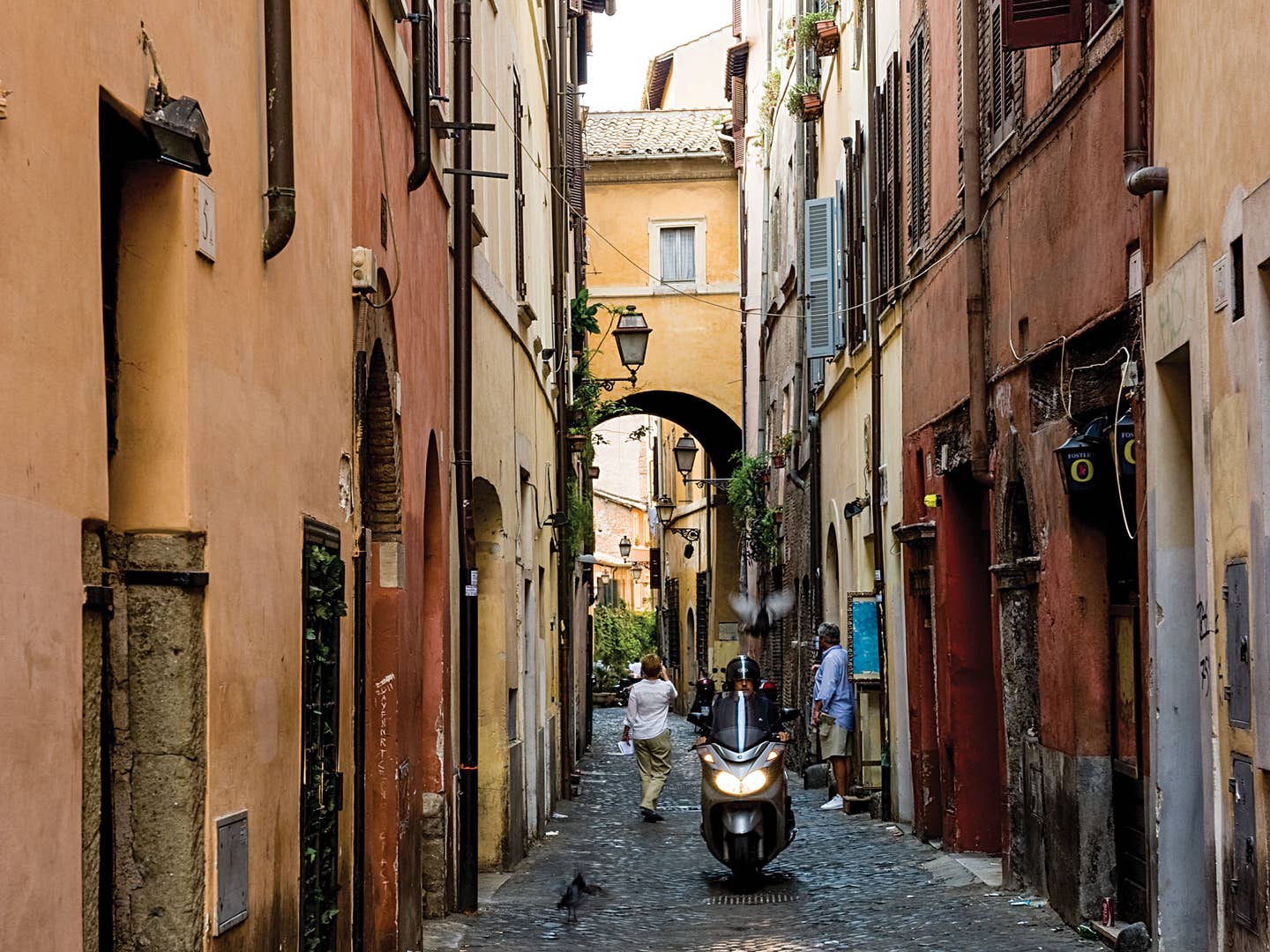
On the Hunt for Rome’s Disappearing Classic Dishes
In the Eternal City, some long-held staples of Roman cuisine are dying out; here’s where to get them before they’re gone
Someday soon, perhaps, lumache alla romana (plump snails braised in a spicy tomato sauce with mint) will disappear entirely from menus across Rome. At one time, snails were the centerpiece of a local ritual: Hungry Romans headed to suburban fields and vineyards to collect them in late June and cook them into this earthy, mildly piquant dish celebrating the feast day of Saint John the Baptist. It was a tradition unique to Rome, and snails were one of the things that defined cucina romana.
But Romans don't seem to care for snails anymore. Or liver and sweet caramelized onions. Or noodle soup with delicate hunks of tough-to-clean skate. Or many of the staple ingredients that once made Roman cuisine distinct. The city's trinity of traditional dining venues—the elegant ristorante, the rustic trattoria, and the bare-bones osteria—now competes with French bistros, gastropubs, all-you-can-eat promotions, fast-food chains, and an alarming number of mediocre burger joints offering plenty of variety but little substance. A proper Roman dinner once followed a prescribed ritual, a timeless pattern—the antipasto, the primo, the secondo, the contorno, and the dolce—and meals were long, wine-fueled events, portions were manageable, and when you booked a table it was yours for the night. Now, on the increasingly rare occasions when Romans go out for traditional fare, they eat fewer courses, drink less wine, and spend less time at the table. Trattoria owners are obliged to adapt or perish. Restaurants now serve super-sized pasta portions, they turn tables, and, thanks to the E.U.'s globalized food system, dishes often aren't made with the fresh, local ingredients that defined the flavors of the past.
There are a handful of culinary preservationists keeping the city's cuisine alive, thankfully—chefs and restaurant owners who are carrying on the traditions of their family-run restaurants. One is Claudio Gargioli. He's in his kitchen six days a week, buttoned into his gray chef's coat, emerging occasionally to greet regulars. You can see him from the dining room, moving around a broad iron stove, tossing pasta in warped aluminum pans, and seasoning gently simmering pots of oxtails. Since Claudio's father opened his eponymous trattoria, Armando al Pantheon, in 1961, three generations of Gargiolis have transformed this small family business into a Roman landmark known for its soulful renderings of cucina romana. When I sit in the dining room watching Claudio work, twirling his comforting spaghetti ajo, ojo, e peperoncino around a fork, the place, like the hulking mass of the neighboring Pantheon, feels gratifyingly constant, resistant to the evolution overtaking so much of the city.
Over the centuries, cucina romana has become a pillar of Rome's cultural patrimony, but by embracing a global approach to food, Rome risks losing this fundamental part of its identity—the incredible dishes that used to define the city's cuisine. The traditional foods and flavors of the city are a direct link to the past and are as precious and worthy of protecting as any piazza, chapel, or ancient relic. Here are some of Rome's classic restaurants and the timeless dishes they are saving.
Six Roman Classics
Trattoria al Moro: Lumache alla Romana; Rome
Helmed by four successive generations of Romagnolis since the 1920s, Trattoria al Moro serves this classic dish of snails cooked in a rich tomato ragu.
A ten-minute walk from the Pantheon—and about 300 feet from the Trevi Fountain—a window-paned door admits visitors to the time capsule that is Trattoria al Moro. Helmed by four successive generations of Romagnolis since the 1920s, the place began humbly, slowly building a reputation among actors at the nearby Teatro Quirino. In time, it became the haunt of local artists, performers, and filmmakers, including Federico Fellini, who cast Mario Romagnoli in his 1969 film Satyricon. It remains a destination for well-heeled, decades-long regulars who, in typical Roman style, receive special pampering from the notoriously aloof owners. Third-generation Franco Romagnoli and his children Elisabetta and Andrea are unwavering in their commitment to tradition, and they serve a huge array of forgotten classics in their three wood-paneled, overcrowded dining rooms. Lumache alla romana, snails cooked in a sauce spiked with anchovies, chile, and mint, is served exclusively around the Feast of Saint John the Baptist. The slightly spicy dish is now virtually absent from Roman tables, as snails, eels, and other fringe foods have fallen out of fashion.
Trattoria al Moro
Vicolo delle Bollette 13
See the recipe for Lumache alla Romana »
Checchino dal 1887: Garofolato; Rome
Amid Tex-Mex restaurants and budget sushi, this trattoria stands apart, promoting traditional Roman fare like this veal cutlet slowly braised in a clove-spiked tomato sauce.
Leaving the centro storico and heading south to Testaccio, Checchino dal 1887 is where the Mariani family preserves and promotes historic dishes in the shadow of Monte dei Cocci, an archeological site composed of tens of millions of discarded terra-cotta jugs that were used to carry olive oil from Andalusia to Rome. Chef Elio Mariani serves one of the last surviving examples of garofolato, a dish named for its main seasoning, chiodi di garofano, cloves. Veal or beef eye of round (whichever is available from their purveyor that day) is simmered in a tomato sauce perfumed with a healthy dose of the dried spice, which isn't used as much as it used to be. "I think that cooking traditional food and continuing to do it against all odds is important," Mariani says. "It's a safeguard that protects the very definition of being a real Roman." His neighbors around Monte dei Cocci include American-style brunch spots, a budget sushi restaurant, and a place that doubles as a Tex-Mex restaurant and discoteca.
Checchino dal 1887
Via di Monte Testaccio 30
See the recipe for Garofolata »
Armando al Pantheon: Pere Cotte con le Prugne and Spaghetti Ajo, Ojo, e Peperoncino; Rome
This Roman trattoria serves classic dishes like pears and prunes baked in red wine.
In the past, spaghetti ajo, ojo, e peperoncino (pasta coated with garlic and chile-infused oil) was a regular late-night staple. Long meals would end with this simple, subtly spicy dish, which was served after dessert. "It signaled the end of a meal," says Claudio Gargioli, the chef at Armando al Pantheon. Now, he features it on his menu alongside popular primi like carbonara, gricia, and cacio e pepe, because a full-on Roman meal doesn't end with pasta anymore; it ends with dessert. Popular local sweets on the dessert menus around town have themselves been replaced by generic pan-Italian favorites like panna cotta and tiramisù, but remaining true to its roots, Armando al Pantheon serves the old-school Roman classic of pears and prunes baked with red wine. It's a rare example of the waning local custom of eating fiber-rich, digestion-aiding desserts that showcase the simple, sweet, and caramelized notes that were once typical.
Armando al Pantheon
Salita dei Crescenzi 31
See the recipe for Pere Cotte con la Prugne »
See the recipe for Spaghetti Ajo, Ojo, e Peperoncino »
Mordi e Vai: Fegato alla Macellara; Rome
This Roman market stall serves a wide range of meat-and-offal–centered dishes, including this calf’s liver sandwich on crusty bread, slicked with caramelized onions and cherry tomatoes.
Mordi e Vai in the Testaccio Market attracts budget-conscious Romans hungry for hearty local flavors. Mara and Sergio Esposito and their son Giuliano opened the stall in 2012 when the Testaccio neighborhood's market was transferred to a modern building beside the former slaughterhouse. They make a dazzling range of meat-rich and offal-heavy recipes culled from the Esposito family archives, including fegato alla macellara ("butcher's style" liver cooked with onions and tomatoes), a nod to Sergio's previous gig at his family's butchery stall. The earthy and sweet onion-laden dish is a flavorful reminder of Testaccio's past, when slaughterhouse workers used every part of an animal. Liver, once a common ingredient, has fallen out of favor as Romans swap organs and poor cuts for more impressive, expensive ones.
Mordi e Vai
Box #15 in the Nuovo Mercato di Testaccio
See the recipe for Fegato alla Macellara »
Left: A Roman trattoria | Right: Minestra di Broccoli e Arzilla
A restaurant near the Spanish Steps in Rome advertises traditional Roman cuisine. Across the city, Trattoria da Cesare serves an iconic fish and romanesco soup.
In the Gianicolense district, Leonardo Vignoli and Maria Pia Cicconi of Trattoria da Cesare serve a menu guided by the seasons, a feature of the cucina romana that is no longer a given. During the cool months, when romanesco is in season, da Cesare makes minestra di broccoli e arzilla. The soup, made with skate and romanesco, used to be a fixture on the Roman table, but as a greater variety of fish became available in the capital, skate, which is bony and cartilage-riddled, was abandoned for less labor-intensive species. Serving this delicious relic of Roman cuisine is particularly meaningful for Leonardo. "For me this recipe means anchoring a part of history in the present," he tells me. "Often, if we change too much and too quickly without remembering where we come from, we risk putting the past on a shelf to collect dust and be forgotten."
Trattoria da Cesare
Via del Casaletto 45
See the recipe for Minestra di Broccoli e Arzilla »
Where to Stay While Hunting Down Old Rome
G-Rough
The G-Rough, a suites-only boutique hotel, marries art, fashion, tranquility, and luxury in a converted 17th-century edifice just steps from the busy Piazza Navona.
Piazza di Pasquino 69
Palazzo Dama
Located just outside Piazza del Popolo, this five-star boutique hotel fills the fabulously restored villa and grounds of the former home of the aristocratic Malaspina family.
Lungotevere Arnaldo da Brescia 2
Keep Reading
Continue to Next Story
